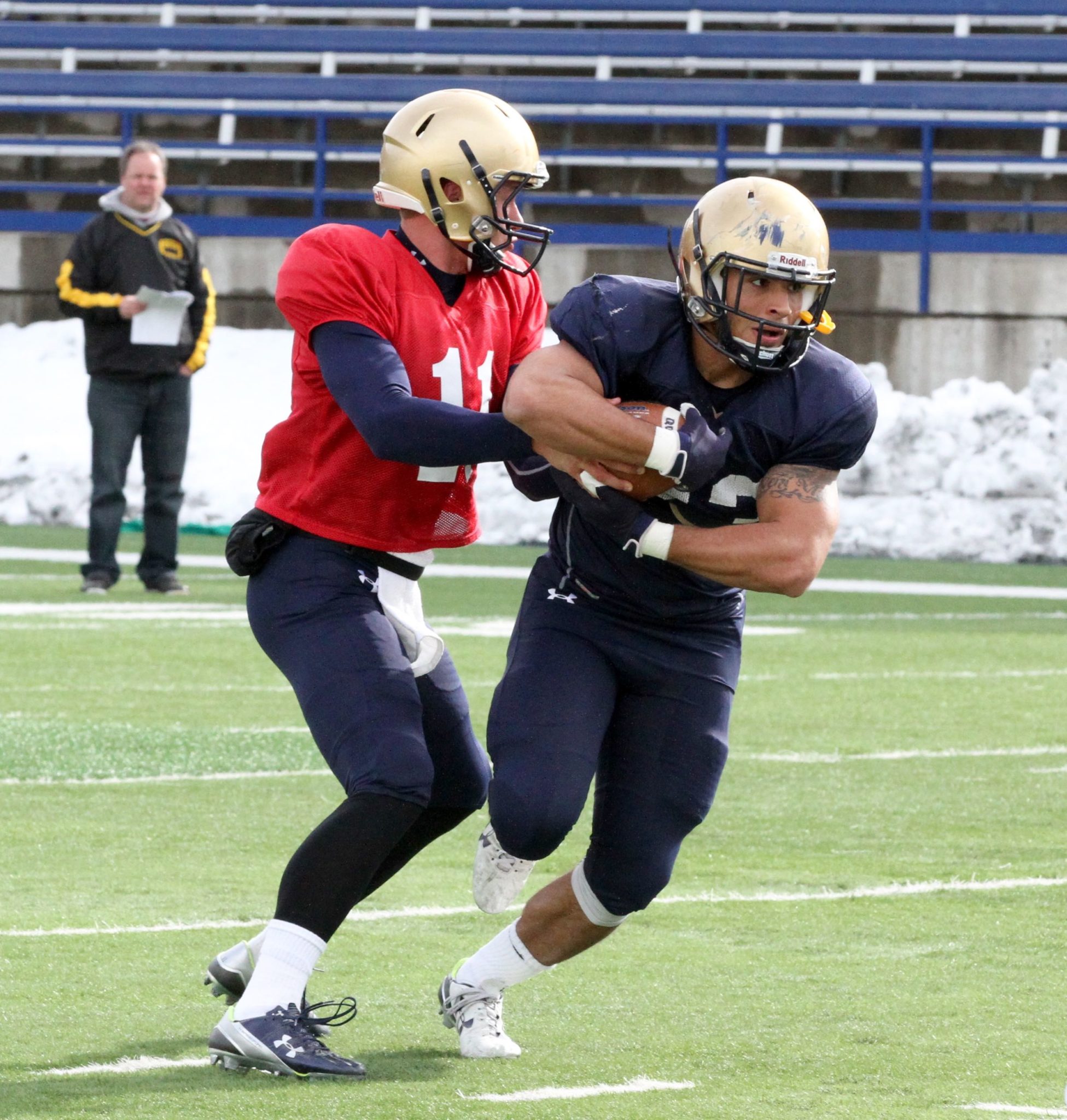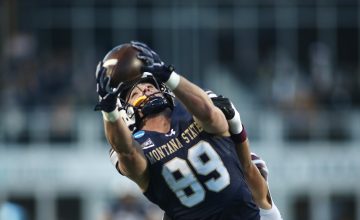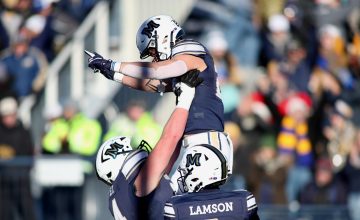With Montana State beginning its first fall camp under Jeff Choate this week, Skyline Sports will break down MSU’s roster by highlighting prominent battles for playing time in each position group.
Today’s position: Running back rotation
The players: Nick LaSane (a 5-foot-11, 213-pound junior), Noah James (a 6-foot-1, 215-pound redshirt sophomore) and Logan Jones (a 5-foot-7, 180-pound second-year sophomore).
What’s at stake: In Montana State’s new offense under first-year coordinator Courtney Messingham, the Bobcats are sure to run the football regularly. The senior tailback tandem of Chad Newell and Gunnar Brekke are sure to get the lion’s share of the carries. But a reliable third and perhaps even fourth option will be necessary for depth and the durability of the seniors.
Montana State has a fullback listed on the depth chart and Newell is the No. 1 guy. The Billings Senior product is also listed as the co-starter with Brekke at tailback. But MSU will employ two running backs more often this year, meaning a viable third tailback will be a crucial element for Montana State’s offense.
How they fared in 2015: Two years ago, Montana State’s rushing attack was among the best in the Big Sky Conference. MSU was able to stay dedicated to the run because of a versatile offensive scheme, a multitude of ball-carrying options and the added element of quarterback Dakota Prukop. Last season, Prukop led the team with 158 carries and Newell got 154 more, meaning there were only 113 carries for the other five running backs. Of those carries, 63 went to Brekke.
In other words, LaSane, James and Jones have not been battle-tested much. Last season, LaSane, a once highly touted recruit from Dallas, rushed for 97 yards on 27 carries, including a pair of touchdowns, giving him three touchdowns in his career.
James, a standout at Kalispell Glacier who broke his leg his senior prep season before walking on to the Bobcats, earned himself seven carries for 37 yards, including his first career touchdown against East Tennessee State.
Jones, a lightning-fast mighty mite who is also a walk-on from Kalispell Glacier, was one of two true freshmen to break into the lineup last fall for MSU (cornerback Tre’Von Strong was the other). Jones earned only two carries and gained just 12 yards from scrimmage last season. But he excelled on special teams, earning honorable mention All-Big Sky honors as a kick returner. He averaged 25.5 yards on 11 returns, including a 100-yard return for a touchdown against Portland State.
How they fared during spring practice: During the Triangle Classic spring game in Great Falls, LaSane led the Bobcats in rushing yards during the team period of the session. During the Sonny Holland spring game, LaSane scored a 10-yard touchdown on a fullback trap. He showed good hands in pass catching situations out of the backfield throughout the spring.
Neither Jones nor James found the endzone during any live session of spring drills.
The case for LaSane: LaSane gained traction through experience during spring drills. The explosive runner looks like he’s finally recovered from the knee injuries he suffered his senior year of high school and his redshirt freshman year at Montana State, though he still suffers soreness from time-to-time. LaSane will have to continue to prove himself during fall camp if he wants to earn the No. 3 carries behind Newell and Brekke.
The case for James: When given the opportunity, James has shown a powerful running style. But he’s also been banged up despite playing sparingly in games. James must first stay healthy in order to give himself an opportunity to earn carries as a sophomore. Barring injury, it’s unlikely he’ll steal carries from LaSane but solidifying himself as MSU’s fourth tailback could still garner carries, especially if MSU rededicates itself to controlling the clock during Choate’s first season. James could also find a niche on special teams, a place Newell broke out early in his career.
What they must accomplish during fall camp: The physicality of college football has reached an apex, meaning having no less than three running backs you can trust has become essential. At a high impact position like running back, the more capable players you have, the better. And young players develop rapidly at the position if they can earn themselves playing time. Regardless of the end of camp depth chart, all five of MSU’s returning running backs will see the field in 2016. Pass catching and pass protection might be the tipping point for backup supremacy.
Also on the roster: Freshmen running backs Anthony Pegues and Sean Opland will join Michael Pitre’s group in fall camp.
Photos by Brooks Nuanez. All Rights Reserved.















